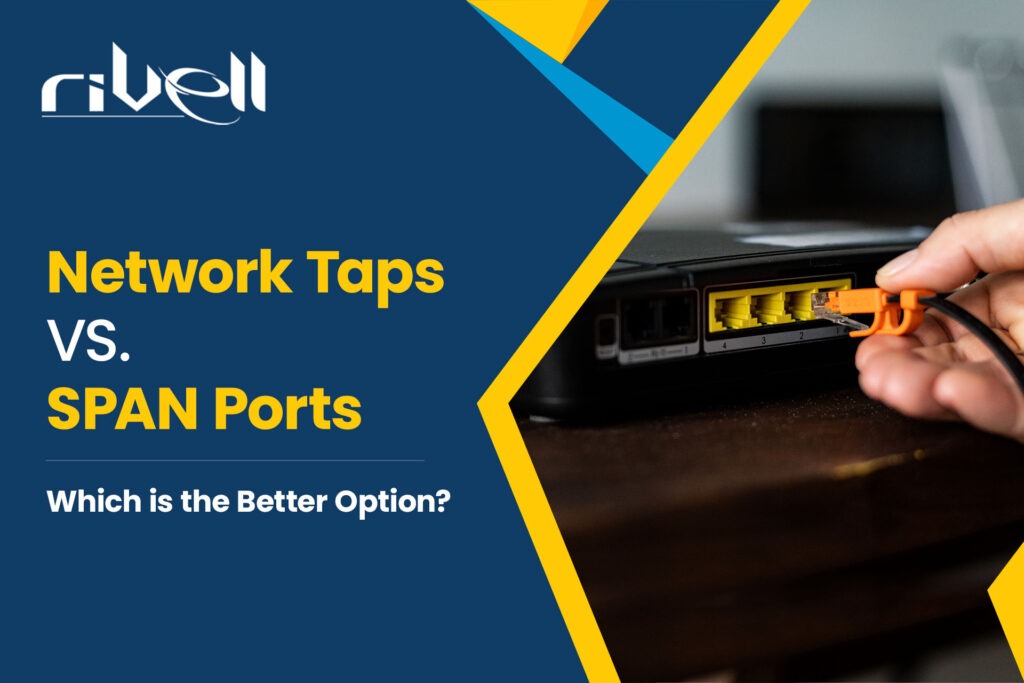Introduction
In today’s digital age, network monitoring and analysis are essential for maintaining a secure and efficient network infrastructure. Two commonly used methods for capturing network traffic are network taps and SPAN (Switch Port Analyzer) ports. Both options have their advantages and disadvantages, and understanding their differences is crucial in determining the better option for your network monitoring needs. In this comprehensive guide, we will delve into the dissimilarities between network taps and SPAN ports, explore their respective disadvantages, and highlight the advantages of network taps.
What is the Difference between TAPs and SPAN Ports?
Network Taps:
Network taps are physical devices that are inserted into the network infrastructure to passively capture and forward network traffic for monitoring purposes. Here are some key differentiating features of network taps:
1. Unobtrusive Monitoring
Network taps operate in a non-intrusive manner, ensuring that network performance remains unaffected during the monitoring process. They capture data packets in real-time without introducing any delays or disruptions.
2. Complete Traffic Capture
Due to their direct access to the network, taps have the ability to capture all network traffic, including errors, oversights, and potential security threats. This comprehensive traffic capture provides a holistic view of network activities.
3. No Network Overhead
Network taps function independently from the network infrastructure, which means they do not introduce any additional network overhead or congestion. This ensures that the monitoring process does not impact the overall network performance.
Read More : Common Network Security Threats and How to Defend Against Them
What are the Disadvantages of Network Taps?
1. Physical Deployment
Installing network taps may require physical access to the network infrastructure, which can be challenging in certain scenarios. This limitation makes network taps more suitable for permanent monitoring setups rather than temporary or remote situations.
2. Cost
Network taps tend to be more expensive compared to configuring SPAN ports on existing network switches. The additional hardware investment may be a consideration for organizations with budget constraints.
SPAN Ports
SPAN ports, or port mirroring, are a feature provided by network switches that replicate network traffic to a designated monitoring device. Let’s explore the distinguishing characteristics of SPAN ports:
1. Limited Visibility
SPAN ports can only mirror the traffic that flows through the switch they are configured on. As a result, they may not capture certain types of traffic or provide complete data compared to network taps. Traffic that bypasses the switch or traffic on other switches within the network may be missed.
2. Network Impact
Enabling SPAN ports can introduce network latency and impact performance. This is because the switch needs to replicate and forward the mirrored traffic to the monitoring device, requiring additional processing.
What are the Disadvantages of SPAN Ports?
1. Limited Visibility
As mentioned earlier, SPAN ports have limitations in capturing all network traffic. They may not capture traffic that bypasses the switch or traffic on other switches within the network, potentially leading to incomplete data for analysis.
2. Network Impact
Enabling SPAN ports can introduce network latency and impact performance due to the processing overhead required to replicate and forward traffic. This impact on network performance should be taken into account when considering SPAN ports for monitoring purposes.
What are the Benefits of Network Taps?
1. Unobstructed Monitoring
Network taps offer a non-intrusive monitoring solution that does not interfere with network operations. They provide continuous, real-time access to network traffic without introducing delays or disruptions.
2. Comprehensive Traffic Capture
Network taps capture all network traffic, including errors, oversights, and potential security threats. This comprehensive visibility enables network administrators to identify and address issues promptly.
3. Compatibility
Network taps are designed to work with various network types, including Ethernet, fiber optic, and legacy systems. They offer versatility in terms of compatibility, ensuring that they can be seamlessly integrated into existing network infrastructures.
4. Independent Operation
Network taps operate independently from the network infrastructure, which means they do not rely on switches or other network devices for their functionality. This independence ensures that network taps do not introduce any additional network overhead or congestion.
5. Inline Security Integration
Network taps can be used to provide traffic to inline security tools, such as intrusion detection systems (IDS) or data loss prevention (DLP) devices, without disrupting the network flow. This integration allows for enhanced security measures without compromising network performance.
6. Reliable and Accurate Data
With network taps, network administrators can obtain reliable and accurate data for analysis and troubleshooting purposes. They can capture all network traffic, including any anomalies or malicious activities, ensuring a comprehensive understanding of the network’s performance.
Conclusion
When it comes to network monitoring, both network taps and SPAN ports have their advantages and disadvantages. Network taps offer unobtrusive monitoring, complete traffic capture, independent operation, and compatibility with various network types. However, they require physical deployment and tend to be more expensive. On the other hand, SPAN ports provide a cost-effective solution and remote configuration flexibility but may have limitations in capturing all network traffic and can impact network performance.
Ultimately, the choice between network taps and SPAN ports depends on your specific network monitoring requirements, budget constraints, and the level of visibility and accuracy needed for your analysis. It is recommended to evaluate your network infrastructure, goals, and available resources to determine which option aligns best with your organization’s needs.
Whether you choose to implement network taps or utilize SPAN ports, it’s essential to partner with experienced professionals who specialize in network infrastructure. By working with a trusted provider of network design and installation services in New Jersey, you can ensure the seamless integration of monitoring solutions that align with your specific business needs.









